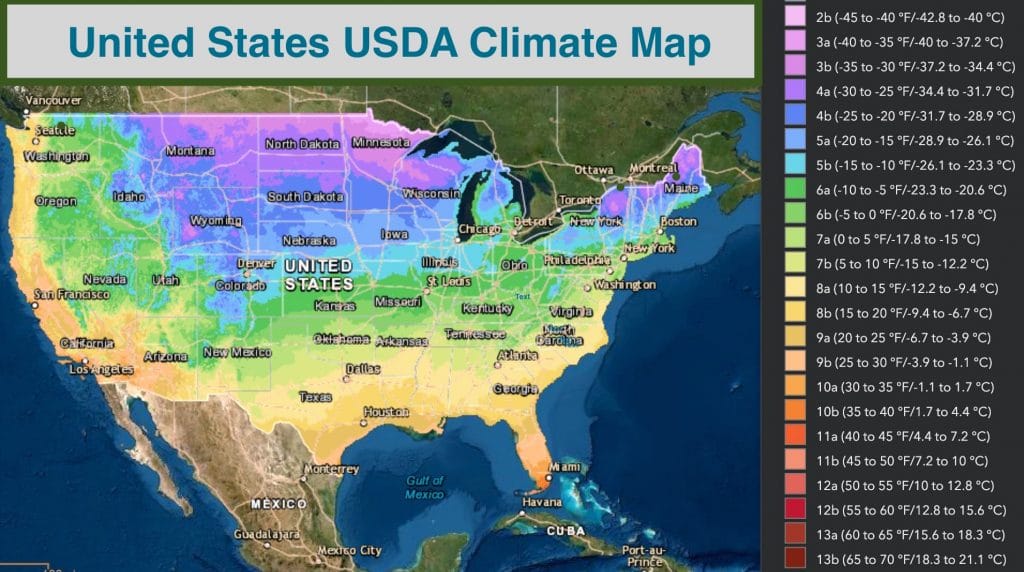Rhubarb is a relatively easy-to-grow perennial that does well in mild climates. Under adequate growing conditions, this crop may return for as many as 15 years (or more). If you are a beginner gardener, consider adding this plant to your vegetable garden: it won’t require any special care and will give you plenty of satisfaction. But what about growing rhubarb in zone 7 and 7b? Is that possible, or could this plant give you some headaches?
We put together this essential guide to help you grow this versatile (but cool-loving) plant in your hardiness zones. The good news is that rhubarb doesn’t suffer from pests or diseases, so you won’t have to worry about them at all! Plus, this plant is an ingredient that you can use for pies, jams, sauces, and crumbles.
Rhubarb is native to Asia but arrived in Europe and America in the 1600s, making it suitable to grow in almost any region. The plant can also improve the aesthetics of your garden: it can add height, structure, and a splash of red ruby color! This plant thrives in cool climates and is popular in northern gardens. While it doesn’t require much attention, you still have to ensure you meet its growing requirements to have it thrive in your garden.
Growing Rhubarb in Zones 7 and 7b
For those rhubarb lovers out there, we got good news! You can grow this perennial in your garden. However, you may have to be considerate about the time of the year you plant this crop to make the most out of it and ensure it thrives in your yard.
For starters, you must know that rhubarb doesn’t like hot weather. Hardiness zones 7 and 7b don’t get too warm in the summer, but you’ll still have to ensure your rhubarbs remain moist during the warmest months of the year. Also, you can plant it in shady areas to protect it from high temperatures during the summer.
Rhubarb establishes well in soil temperatures between 40 and 68F. That means that you must plant your crops in February if you live in USDA zones 7 and 7b. However, always check with your local weather to ensure you don’t transfer your rhubarb to the soil too early or late. Also, remember to space them at least 35 inches apart. If your goal is to have a hardy plant, remember to harvest in one year. Waiting before using your plant will help it establish stronger roots, which in turn will ensure it will last for longer.
Rhubarb requires a dormancy period to thrive and produce abundant harvests. Because this plant will last long in your garden, don’t forget to plant it somewhere it can grow undisturbed. If your soil is dry, add some mulch and compost to increase water retention and improve the nutrient content.
Caring for Rhubarb
If summers get hot, you should consider planting rhubarb somewhere shady. Because this plant needs sun to thrive, choose a location that receives partial site and doesn’t forget to ensure the soil is fertile and well-draining. You’ll want to increase moisture during the hottest months of the year, but roots can rot with too much water. Good drainage is essential to prevent that from happening.
With rhubarb, you won’t have to worry too much about pH. As long as you add some compost or any form of organic matter to the soil, your crop will do just fine. Don’t forget the importance of not skipping this step! Rhubarb plants are heavy feeders and need all the extra nutrients you can give them.
Also, you may want to know that rhubarb can grow big. If you plant it under ideal conditions, it can grow up to three feet tall. Plant them somewhere you know it won’t disturb other plants.
While you won’t need to do much about this plant, you may want to consider removing seed stalks as they appear. They will only drain energy from the plant, which should focus on producing roots and stalks.
Growing Rhubarb In Zone 7 and 7b: The Bottom Line
As you can see, it is possible to grow rhubarb in zones 7 and 7b. All you have to do is ensure you give this crop what it needs to survive and protect it from the hottest months of the year by increasing soil moisture.

